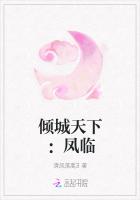Sometimes they indiscriminately translate the results of physical color-mixing into physiological processes, as in the assumption of three fundamental colors, red, green, and violet, from the different mixtures of which all sensations of light, even the achromatic, are to be derived (Young-Helmholtz hypothesis). Sometimes they start with the psychologically untenable assumption that the naming of colors is not due to the influence of certain external objects, but to the real significance of the corresponding sensations (v. sup. p. 63), and assume accordingly four fundamental colors as the sources of all color-sensations. The four fundamental colors here assumed are the two pairs red and green, yellow and blue, to which are added the similar pair of sensations of pure brightness, black and white. All other light-sensations such as grey, orange, violet, etc., are regarded as subjectively and objectively mixed colors (Hering's hypothesis). The evidence in support of the first as of the second of these hypotheses has been derived for the most part from the riot infrequent cases of partial color-blindness. Those who accept three fundamental colors, assert that all these cases are to be explained as a lack of the red or green sensations, or else as a lack of both. Those who accept four, hold that partial color-blindness always includes two fundamental colors that belong together as opposites, and is, therefore, either [p. 73] red-green-blindness or yellow-blue-blindness.
An unprejudiced examination of color-blindness does not justify either of these assertions. The three-color theory can not explain total color blindness, and the four-color theory is in contradiction to cases of pure red-blindness and pure green-blindness. Finally, both theories are overthrown by the cases that unquestionably occur, in which such parts of the spectrum as do not correspond to any of the three or four fundamental colors, appear colorless. The only thing that our present knowledge justifies us in saying, is that every simple sensation of light is conditioned physiologically by a combination of two photochemical processes, a monochromatic and a chromatic. The first is made up, in turn, of a process mainly of disintegration, when the light is more intense, and a process of restitution, when the light is weaker. The chromatic process varies by stages in such a way that the whole series of photochemical color-disintegrations forms a circle of processes in which the products of the disintegration for any two relatively most distant stages, neutralize each other. [ 6 ]
Various changes as a result of the action of light have been observed in the living retina, all of which go to support the assumption of a photochemical process. Such are the gradual change into a colorless state, of a substance which in the retina not exposed to light is red (bleaching of the visual purple); microscopical movements of the pigmented protoplasm between the sensitive elements, or rods and cones; and, finally, changes in the form of the rods and cones themselves. Attempts to use these phenomena in any way for a physiological theory of light stimulation, are certainly premature.
The most probable conclusion which we can now draw is that the difference in the [p. 74] forms of the rods and cones is connected with a difference in function. The centre of the retina, which is the region of direct vision in the human eye, has only cones, while in the eccentric parts the rods are more numerous; furthermore, in the centre (which also wants the visual purple) the discrimination of colors is much better than in the eccentric regions, while the latter are much more sensitive to brightness. The natural conclusion from these facts is that the differences in sensitivity are connected with the photochemical properties of the rods and cones. Still, we lack here too any particular evidence.
[ 1] Pendulum-oscillations may be represented by a sine-curve, because the distance from the position of rest is always proportional to the sine of the time required to swing to the point in question.
[ 2] It must be observed, however, that the actual coincidence of these sensations can be empirically proved only for the minimum of brightness.
Grades of brightness which approach the maximum are so injurious to the eye that the general demonstration of the approach to white must be accepted as sufficient.
[ 3] The same false reasoning from the names of sensations, has even led some scholars to assume that the sensation blue developed later than other color-sensations, because, for example, even in Homer the word for blue is the same as that for "dark". Tests of the color-sensations of uncivilized peoples whose languages are much more deficient in names for colors than that of the Greeks at the time of Homer, have given us a superabundance of evidence that this assumption is utterly without ground.
[ 4] Many physicists, to be sure, believe that an analogous relation is to be found between tones of different pitch, in the fact that every tone has in its octave a similar tone. But this similarity, as we shall see (§ 9), does not exist between simple tones, but depends on the actual sympathetic vibration of the octave in all compound clangs.
Attempts to support this supposed analogy by finding in the color-line intervals corresponding to the various tonal intervals, third, fourth, fifth, etc., have all been entirely futile.
[ 5] In the neighborhood of green this advantage does not exist, and the mixtures always appear less saturated than the intermediate simple colors. This is a clear proof that the choice of the three fundamental colors mentioned is indeed the most practical, but nevertheless arbitrary, and at bottom due to the familiar geometrical principle that a triangle is the simplest figure that can enclose a finite number of points in the same plane.
[ 6] The further assumption is made by the defenders of the four fundamental colors, that two opposite colors are related just as bright and dark achromatic stimulations, that is, that one of these colors is due to a photochemical disintegration (dissimilation), the other to a restitution (assimilation). This is an analogy that contradicts the actual facts. The result obtained by mixing complementary colors is on its subjective side a suppression of the color-sensation, while the mixture of white and black, on the other band, produces an intermediate sensation.















